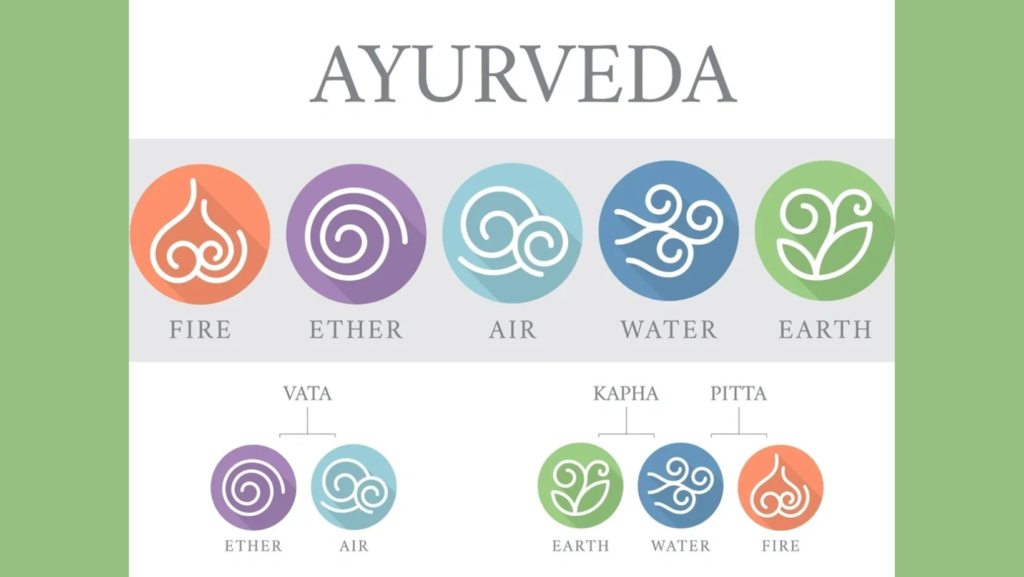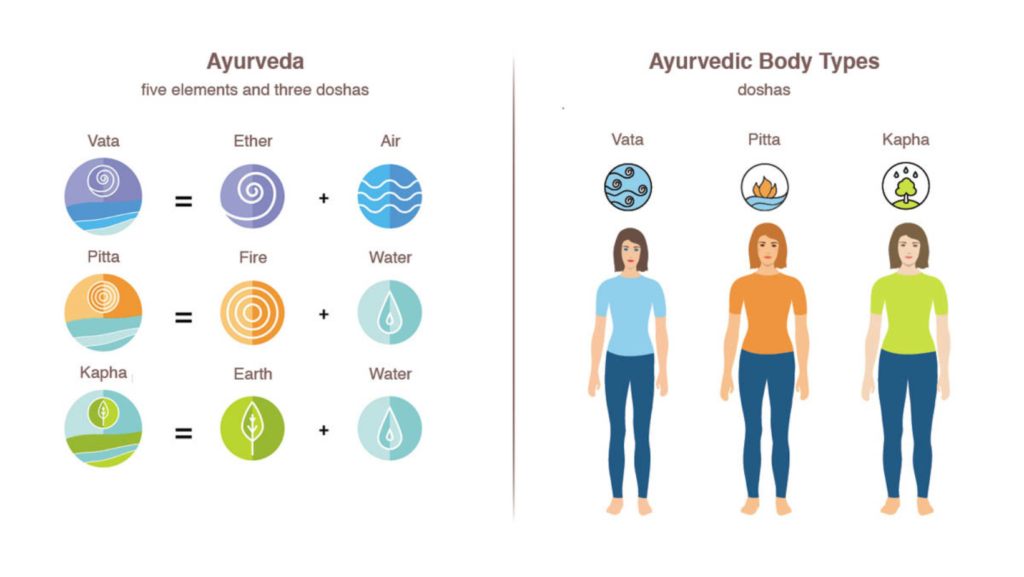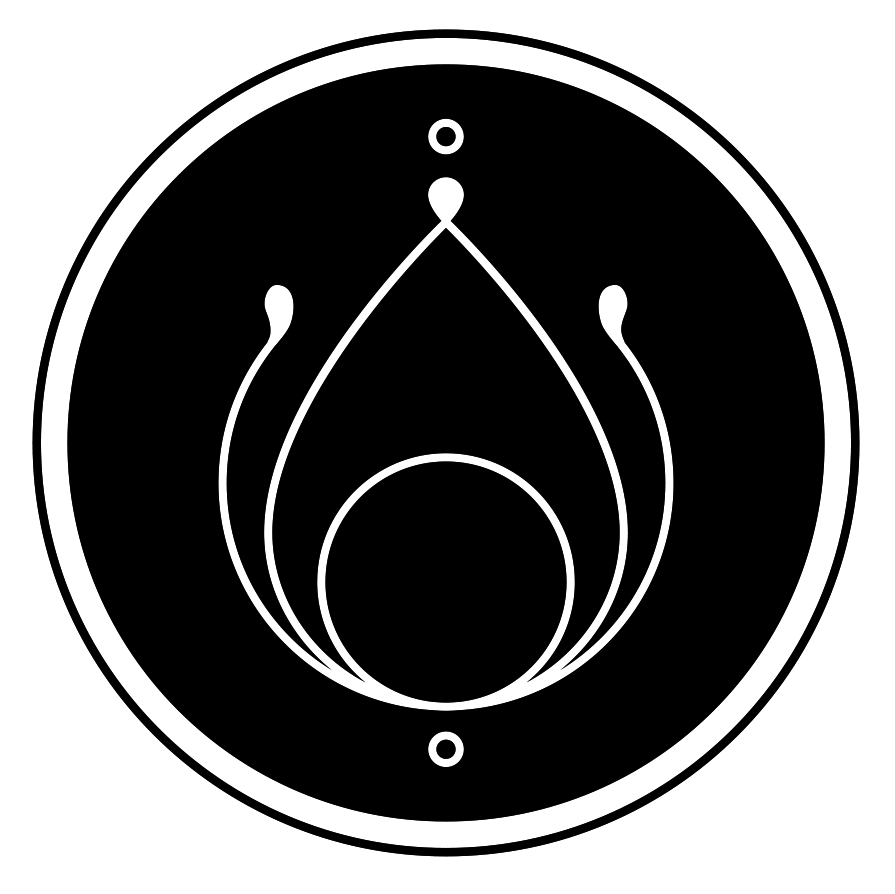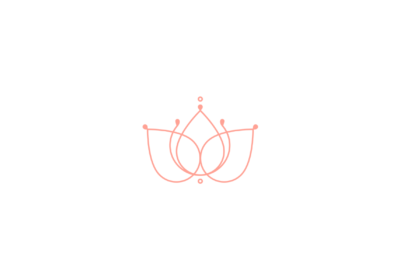Doṣas / Tridoṣa

The three Doṣas or biological humors are the prime factors behind both health and disease. To understand them more easily, we can compare them to the three main forces at work in the atmosphere—with Vata as wind, Pitta as heat (particularly the force of the Sun), and Kapha as moisture (both on Earth and in the atmosphere). Wind, heat (temperature) and moisture in their interaction create all the weather patterns on Earth. They are responsible for all weather changes and the external climate as they fluctuate throughout the seasons.
Similarly, the three doshas rule over our internal climate or internal atmosphere by their ever-changing interactions of movement (Vata), heat (Pitta) and moisture (Kapha) through the rhythms of time and the aging process. Health consists of the timely development and harmonious interaction of the three doshas. Disease is caused by their imbalances, excesses and inappropriate movements.
“The one whose DOSHAS are balanced, whose appetite is very good, whose DHATUS are normally functioning, whose MALAS are balanced and whose complexion, mind and senses are always full of strength and happiness is considered to be a human being in a perfect state of health”.
~Suśruta-saṃhitā
Āyurveda is the basic system of hygiene, diet and medicine developed and improved in India by the great sages and seers thousands of years ago. With rare exceptions its principles are almost unknown in the Western world. This unique medical system expresses in fact a great secret and the teachings of this science will bring invaluable benefits for the mankind.
Āyurveda is a real science of how to live a fulfilled life and its principles are in perfect accord to the Western idea of preventive medicine, ‘holistic’ treatment and diet optimization. According to the ancient theory of Āyurveda, the human constitution, as the entire creation, is made of five basic elements. This five basic elements are: earth, water, fire, air and ether. Ideally speaking, when these five basic elements exist and manifest themselves in a dynamic harmony, they create together the life, power, health and perfection of the living beings.
In their subtlest stage of manifestation each of these elements (Mahābhūta) have a dominant quality. For earth (prithivi) this dominant quality is consistency; for water (apas) fluidity; for fire (tejas) heat; for air (1/2) pressure and for space ether (AKASHA) the subtle sound. According to the Āyurveda system, the five elements (Pañcatattva) are somewhat related to the five senses of man and any other living being (despite the fact that in several cases one or more of these senses are in a potential state).
The five material states corresponding to the five elements (Pañcatattva) are solid, liquid, radiant, gas and the state of the spatial ether. In Āyurveda, the theory of the five elements is permanently used to explain the origin of creation and human life, the nature of the physiological organization of the human body. The five elements are considered to be the source of the curative power of Āyurveda treatments and are also the basis for regimens, basic remedies of plants and according to this way of thinking all foods are considered to be medicines.
The Ayurvedic doctor V.B. DASH give an example of manifestation of these five basic elements in relation with physics. We can consider that the atomic particles are representing PRITHIVI (earth subtle element) and then their cohesion is a function of APAS (water subtle element). The subtle energy manifested inside and outside the atomic field is AGNI (fire subtle element). The movement of the particles is VAYU (air subtle element) and the space ether in which they are moving represents AKASHA.
Both the objective states of the matter and the subjective experiences of the human senses are born of Prakṛti (nature) at the level in which consciousness manifests itself both in matter and in energy. This essential correlation between the objective experience and the subjective one through the mechanisms of the consciousness is only nowadays studied by the Western scientists while in Vedic science it represents a basic principle theoretically and philosophically accepted for thousands of years. The entire Eastern knowledgeclearly presents the complex relation between knower, the process of knowledge and the knowledgeable object. Although this relation is accepted in the western world, there is nothing mentioned about it.
In our sense experiences, the five elements (Mahābhūta) are combining to produce a continuous sensation. For example, sounds are generate through the spatial ether (AKASHA) and the sense of tough comes from the mixed subtle elements of spatial ether and air. The feeling of heat comes from a mixture of spatial ether, air and fire. The water subtle element contains the three above elements to which fluidity is added and the consistency of the earth subtle element contains all five.
The Tridoṣa theory which is a basic theory in Āyurveda claims that every aspect of creation including human physiology consists of these five elements (Pañcatattva). These five elements form in their turn three essential factors. These three factors which are considered the major coordinators (Doṣas or Humors) are called VATA Doṣa, PITTA Doṣa, and KAPHA Doṣa.
In the theory of Tridoṣa, the subtle elements of earth and water are combined in a representation of their function which is most often encountered under the form of the water which moist the earth and so they are called KAPHA Doṣa (humour); water and fire as subtle elements are blending together resulting in their turn a representation of their most encountered function under the form of the digestive juices – and so they are called PITTA Doṣa (humour); air and spatial ether as subtle elements are blending together resulting representation of their most encountered function under the form of the air which moves in the space ether – and so they are called VATA Doṣa (humour).
The Tridoṣa theory of the three Doṣa (humours) when applies to human physiology allows the Ayurvedic doctor to identify and then treat specifically every unique bodily and individual constitution. Thus, every individual has a specific balance of Doṣa (humours) which is naturally correct according to the initial constitution with which the respective individual was born (in fact with which was dotted at birth moment). In the Āyurveda theory this is referred to as Prakṛti) or the individual constitution of the individual.
Through a careful and detailed examination of the specific characteristics of the individual such as pulse, bodily structure, hair, skin, tastes, behaviors and other factors, the Ayurvedic doctor will determine the constitutional type (Prakṛti) and after that s/he will be able to recommend specific therapies for re-balancing, diet and cure which best suit the respective bodily type.
Prakṛti, understood in the sense of the bodily (constitutional) type, offers us precise information regarding the required type of diet, exercises and way of life for every separated individual. Thus, every Ayurvedic treatment following to be recommended requires clear and precise information regarding the individual constitutional type, because the elements which are useful to generate an improved equilibrium, health and to rise the level of the consciousness, to ensure longevity and to prevent aging are always based upon the universal knowledge of every constitutional type and understanding of their peculiar necessities.
To illustrate as clear as possible the stream of evolution from the unified field to the five elements (Mahābhūta) and the relation between these five elements (Pañcatattva)) and the Tridoṣa theory of Āyurveda, we will present this information under the form of tables. The significance of the five elements is essentially physical while the Tridoṣa theory describes the forces that are responsible for the physiological functioning.
According to the Āyurveda conception, the state of health represents a dynamic equilibrium between the Dhātu (tissues) which support the body. When the Dhātu (tissues) are not in full equilibrium we call them Doṣa (humours) which in this case means “impurity” (according to the Sanskrit word meaning wrong act or break).

I. VATA Doṣa – THE PRINCIPLE OF MOVEMENT OR PROPULSION
- Vata means ‘that which moves or conveys things’. It is composed of the ether and air elements, which are its conditions of rest (ether) and movement (air).
- Vata is responsible for all major and minor, perceptible and imperceptible movements in the body. It is the prime force that governs the transportation of fluids, the discharge of secretions, and the elimination of waste-materials. Its main physical disorders are tissue depletion, debility, dehydration and disturbances to the mind and nervous system.
- Vata governs the mind and the senses, which function through its bioelectrical force, ensuring their quick and balanced function. It gives agility, adaptability and good communication skills to the mind. Emotionally, Vata’s main disturbances are fear and anxiety. It causes ungroundedness and instability when imbalanced or when in excess.
- Vata’s subtle or master form is Prana or the life-force, the prime vital energy behind all that we do. Prana is responsible for our organic equilibrium, hormonal secretions, growth, healing, creativity and rejuvenation. It is the master force behind all our states and conditions of body and mind.
- Vata’s main site in the digestive system is the large intestine where it accumulates in the form of waste gas. From there it gets transported by the circulatory system to weak sites in the body where it causes various Vata diseases like arthritis, weight loss, insomnia, mental agitation and nervous system disorders.
II. PITTA Doṣa – THE PRINCIPLE OF DIGESTION OR THERMOGENESIS
- Pitta means ‘that which cooks or digests things’. It is composed of the fire and water elements (with the oily aspect of liquids providing for its fuel in the body).
- Pitta is responsible for the conversion of food into heat, tissues and waste-materials. It governs digestion and metabolism from the cellular level to the tissue level, to that of the body as a whole. Its main physical disorders are fever, infection, inflammation and bleeding.
- At the mental level, Pitta is responsible for perception, judgment and determination and gives clarity and discrimination to the mind. Emotionally, Pitta creates drive and passion and its main disturbance is anger, which is toxic emotional heat or fire.
- Pitta’s subtle or master form is called Tejas which provides positive warmth, radiance and insight. Tejas gives sexual vitality, courage and the ability to fight disease and resist cold.
- Pitta’s main site in the body is the small intestine, where it accumulates in the form of acid and heat. From there it gets transported by the circulatory system to weak sites in the body and causes various Pitta diseases like ulcers, infections and inflammation of different types, particularly blood disorders.
III. KAPHA Doṣa – THE PRINCIPLE OF COHERENCE OR COHESION
- Kapha means ‘that which holds things together’. It is composed of water and earth elements, which are its states of motion (water) and rest (earth).
- Kapha is responsible for the formation of new tissue, for hydration, nutrition, lubrication and protection of the body against heat, wind, wear and tear. The body as a whole is composed mainly of Kapha (earth and water).
- Kapha’s main physical disorders are accumulations of mucus, water or excess tissue development, particularly fat or adipose tissue.
- Psychologically, Kapha is the basis of feeling and emotion, love and caring. It imparts stability, calm and contentment to the mind. Emotionally, its main disturbance is attachment, which results from too much heaviness (earth and water) in the mind.
- Kapha’s subtle or master form is called Ojas, which is the essence of all the bodily tissues. Ojas is responsible for resistance to disease, endurance, strength, patience, fertility and longevity. Ojas provides the foundation for good health, emotional happiness and peace of mind.
- Kapha’s main site in the body is the stomach, where it accumulates in the form of mucus or phlegm. From there it gets transported by the circulatory system to weak sites in the body and causes various Kapha diseases like asthma, diabetes, edema, heart disease and obesity.

VATA TYPES
are airy in their physical characteristics with a thin frame, low body weight, poor resistance to disease, and lack of tissue development. They easily overextend themselves and fall into conditions of exhaustion or debility. They are sensitive to wind, cold and dryness as environmental factors and feel better in conditions of warmth, moisture, rest and nurturing support. Psychologically, Vatas are restless, active, nervous and creative individuals, with many talents, who are often hypersensitive and can be a bit fragile.
PITTA TYPES
are fiery in their physical characteristics with a moderate frame, moderate body weight, strong appetite, ruddy complexion, good circulation and warm extremities. They easily overheat themselves and quickly come down with various infectious diseases. They are sensitive to heat and light as environmental factors and feel better in conditions of coolness and calm. Psychologically, Pittas are determined, intelligent, motivated and aggressive individuals who achieve their goals in life but often run into conflict.
KAPHA TYPES
are watery in their physical characteristics with a stocky frame, sturdy build and good tissue development. They dislike movement and easily accumulate weight, water or mucus owing to their slow metabolisms. They are sensitive to cold, dampness and stagnant air as environmental factors and feel better in conditions of warmth, dryness and increased activity. Psychologically, Kaphas are emotional, caring, stable and conservative types who value their feelings but easily get attached.


